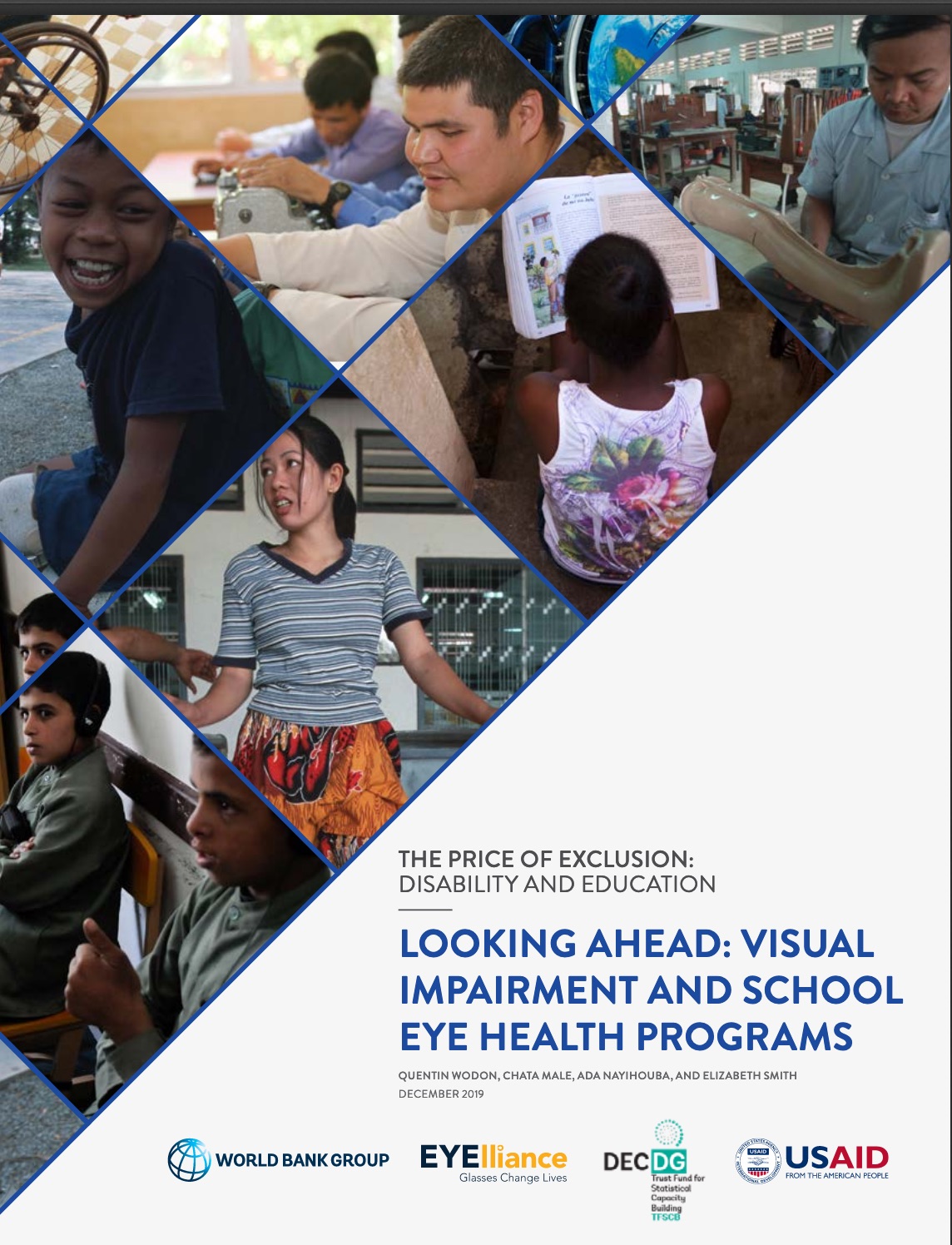
Looking Ahead: Visual Impairment and School Eye Health Programs
This report from the World Bank examines some of the challenges facing students with visual impairments in developing countries, especially in countries in Sub-Saharan Africa.
Looking Ahead: Visual Impairment and School Eye Health Programs is a 40-page document from the World Bank.
The report states that, “Children with disabilities are especially at a disadvantage in terms of school enrollment, educational attainment, and learning. This is especially the case in low income countries and sub-Saharan Africa, the region on which this note focuses where disability gaps in educational attainment are increasing and affordability and other constraints lead many children with disabilities to never enroll in school or drop out prematurely. They also often learn less while in school.”
A key message of the report is that “Visual impairment is one of the most common disabilities for children – yet the vast majority of cases of vision impairment in children can be corrected simply with a pair of eyeglasses.”
Contents
-
Performance in School, Screening for Visual Impairment, and Access to Eyeglasses
-
Characteristics of Successful School Eye Health Programs
-
Cost of School Eye Health Programs
-
Improving Data Availability
-
Types and Causes of Visual Impairment
-
Inclusive Education and the World Bank
-
Primary Education Completion
-
Ever Enrolling in School
-
Literacy
-
Marginal Impacts for Enrollment, Attainment, and Literacy
-
What Do We Mean By “Impacts” of Exclusion Related to Disabilities?
-
Levels of Visual Impairment
-
Student Performance in School
-
Interpreting PASEC Scores
-
School Eye Health Programs
-
Investing in Education for Children with Disabilities Has High Returns
-
Coverage of School Eye Health Programs in Africa: The Case of PASEC Countries
-
Implementing National Programs in Africa: The Cases of Liberia and Botswana
-
Cost of School Eye Health Programs: A Survey of Providers
